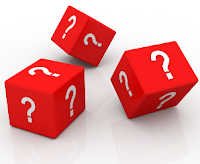 In my today's article I'd like to present several ways I use at the end of the lesson to summarise all that has been done at the lesson. It may usually take up to 7 minutes and is a good way to relax a bit at the end and reflect on all that has been done during the lesson.
In my today's article I'd like to present several ways I use at the end of the lesson to summarise all that has been done at the lesson. It may usually take up to 7 minutes and is a good way to relax a bit at the end and reflect on all that has been done during the lesson. 
 Suitcase --> words/flashcards that we might need during the trip to Britain, or that we want to remember.
Suitcase --> words/flashcards that we might need during the trip to Britain, or that we want to remember. Mincing machine --> The vocabulary that we worked on, that we remember after the lesson.
Dustbin --> words that we don't like, or that we don't need to remember or simply find too difficult. When all the words have been distributed, we read them usually all together. Sometimes, I turn them over and ask students to tell me what was in the mincing machine, suitcase and the dustbin. I printed out mine, but one can even draw the images on the board.
2. Cinquain
This way of reflexion is most suitable for older students. At the end of the lesson everyone writes a short cinquane in which there are 5 lines:
1st line - one word, which is a noun and a topic of the lesson.
2nd line - 2 adjectives to describe qualities
3rd line - 3 words, verbs to describe actions
4th line- 4 words that describe your attitude
5th line - 1 word, a resume or idea of the topic
1. Food
2. Sour, bitter
3. Smell, chew, lick
4. I prefer healthy food.
5. Cooking
 3. Target . The idea is to evaluate the work at the lesson. The teacher draws the target on the board, divides it into 4 sectors: My work, Neighbour's work, Class Work, Teacher's Work. Evaluating the work pupils have to explain their mark and give recommendations if necessary. As a rule they give good marks and if there is something they consider can be changed, they use a recommendation.
3. Target . The idea is to evaluate the work at the lesson. The teacher draws the target on the board, divides it into 4 sectors: My work, Neighbour's work, Class Work, Teacher's Work. Evaluating the work pupils have to explain their mark and give recommendations if necessary. As a rule they give good marks and if there is something they consider can be changed, they use a recommendation. 4. Putting reflection questions on dice is a fun way to vary the reflection experience. Here is a list of possible questions that can be written on the dice. They can be placed in your native language too if the students are too small to understand.
4. Putting reflection questions on dice is a fun way to vary the reflection experience. Here is a list of possible questions that can be written on the dice. They can be placed in your native language too if the students are too small to understand.
Questions on the dice:
1. How will you explain to another pupil that this topic is important?
2. What do you find interesting in this topic?
3. What questions have you got in this topic?
4. What do you already know on this topic?
5. What is important for you in this topic?
6. What do we have to remember from this topic?
7. In your opinion, what is the best way to teach somebody this topic?
8. How can you use this topic in your life?
9. What else would you like to know on this topic?
 5. Graffiti reflection. This is a very easy way to reflect on the lesson. Each student has to write on the board 1-3 words/ideas/sentences/names from the lesson. When all is done, you all try to find similar words/ideas/sentences/names, read them and wipe them out. When all is wiped out, you all try to remember what was written here or there.
5. Graffiti reflection. This is a very easy way to reflect on the lesson. Each student has to write on the board 1-3 words/ideas/sentences/names from the lesson. When all is done, you all try to find similar words/ideas/sentences/names, read them and wipe them out. When all is wiped out, you all try to remember what was written here or there.
I hope this article was useful for you. If so, share it with your friends and there is a link below to read about warm-up activities to begine the lesson with.
HERE IS A LINK TO WARM-UP EXERCISES TO START THE LESSON

No comments:
Post a Comment